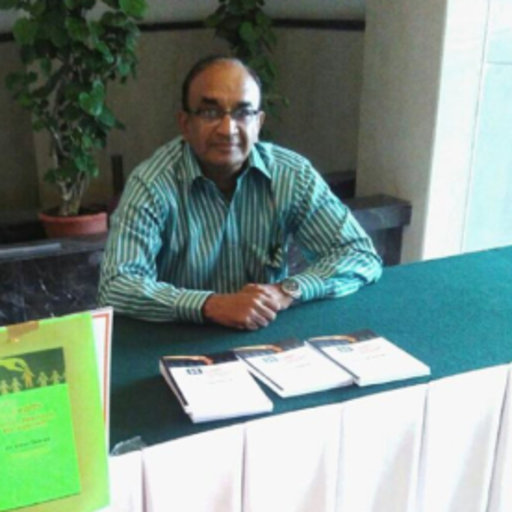lighthouse
Dokras, Uday
 Uday Dokras is a prolific writer with a focus on Eastern religions and history. Many of his papers are available on the Academia website(a). He is reputed to have written the highest number of books and research papers! Included in his extensive output is a book entitled Atlantis – The Lost Continent. In it he reviews the subject of sunken cities and land both in the West and in the Orient, such as Kumari Kandam(b). His chapter on Atlantis offers little that is new and is simply a brief review of current theories.
Uday Dokras is a prolific writer with a focus on Eastern religions and history. Many of his papers are available on the Academia website(a). He is reputed to have written the highest number of books and research papers! Included in his extensive output is a book entitled Atlantis – The Lost Continent. In it he reviews the subject of sunken cities and land both in the West and in the Orient, such as Kumari Kandam(b). His chapter on Atlantis offers little that is new and is simply a brief review of current theories.
>He also produced a paper on the ancient lighthouse at Alexandria (Pharos)(c).
Arguably his most contentious offering is an extensive paper(d) on the existence of the vimanas of ancient India and Pakistan. He presents an array of evidence from Hindu scriptures and concludes with a review of modern writers and the unsuccessful attempts to design and build a vimana today using these old texts.
Although Dokras’ paper is worth a read, I suggest that it be undertaken along with the more critical responses of debunkers, such as, Jason Colavito has drawn attention to the fact that
“The concept of these flying chariots as UFO-style airships originates in a fraud, the Vaimanika Shastra, allegedly an ancient Sanskrit epic, but one “channeled” from the astral realm by a Hindu psychic in 1918. No evidence of this text exists prior to 1952, and even the “translator” of the text makes explicit that it was channeled from the spirit world between 1918 and 1923. The fake text specifically compares the vimanas to modern aircraft, describing their propulsion systems and other modern technological achievements.”(e) David Hatcher Childress’ story of the Vaimanika Shastra has been challenged elsewhere including an article by Andrew May(f).<
(a) https://su-se.academia.edu/DrUdayDokras
(b) https://www.academia.edu/95153127/ATLANTIS_The_lost_Continent_BOOK
(c) https://archive.org/stream/lighthouse-of-alexandria-book/Lighthouse%20of%20Alexandria-BOOK_djvu.txt *
(d) (99+) VIMANA Ancient Conquests of Wind | Dr. Uday Dokras – Academia.edu *
Faro *
Faro in Portugal has been linked with the Greek Pharos or lighthouse. Roger Coghill offers an ingenious theory on the origin of Faro’s name and connects it with Plato’s Atlantis(c). I have taken the liberty of quoting from his website(a) which is at least worth a read.
“That beacon is exactly what Faro (Pharos is Greek for lighthouse) I believe provided, at its location in the middle of that otherwise inhospitable coastline, exactly where Plato described it.
The question is, if this is right, how could such a primitive civilisation have provided a continuous lamp, bright enough to be seen thirty miles offshore in unsettled weather? (Further than 30 miles it would have been below the horizon. Sailing downwind in a real gale one has scarcely time to make a major course correction in thirty miles: you only have one chance!
I believe that the answer lies not on the coast, but inland of Faro, where there are the world’s largest and most ancient copper and zinc mines lying adjacent to each other, and have given rise to today’s commercial giant, the RTZ Corporation, which stands for Rio Tinto Zinc. The Rio Tinto flowing down to that part of the Atlantic coast is so called because of its alluvial copper. Any schoolboy today knows that you can make a voltaic battery quite capable of lighting any filament lamp by simply connecting copper to zinc.
The first schoolboy ever accidentally to discover this may plausibly have lived a little inland from modern Faro, since the two component materials were plentiful and to hand. It is my speculation that here in this fertile cradle of civilisation was first discovered the ability to make electrons flow and thereby create primitive electrical energy.
Plato helps us into this belief: he explains how the city was built as a city with three concentric rings, each ring being clad with a different metal and in the centre a beacon “shone like a torch”. It is important for scholars to note that the words Plato used are not those suggesting reflected light, as in a mirror, but of intrinsic light, self- generated. What Plato is describing then is a city built as a huge lighthouse and plausibly powered by the electrical current flowing between copper and zinc cladding, separated by huge walls.”
In 2006 Larry Radka(b) edited The Electric Mirror on the Pharos Lighthouse and Other Ancient Lighting[0948], which according to one commentator is a reworking of a much older work. In it, is the claim is made that the famous Pharos lighthouse was powered by electricity. All we have is a coincidence of two similar sounding names (Faro & Pharos) and their alleged identical function combined with speculation, but no evidence at either site.
While Radka’s claim is rather extreme, Robert Temple in The Crystal Sun is more restrained where he refers to a 16th century account of a telescope at Pharos in the 3rd century BC, implying the existence at that early date of some optical technology and its possible use in the lighthouse there [928.128]. Temple’s entire book is devoted to proving that the science of optics is much older than generally accepted. When we consider the Antikythera Mechanism or the ‘Baghdad Battery’, it may be unwise to be too dismissive of Temple’s conclusions in this regard.
(a) https://web.archive.org/web/20121122090109/https://www.cogreslab.co.uk:80/prehistory.asp (Link broken) *
(b) https://www.bibliotecapleyades.net/ciencia/ciencia_hitech05.htm
(c) Archive 2086 | (atlantipedia.ie)
